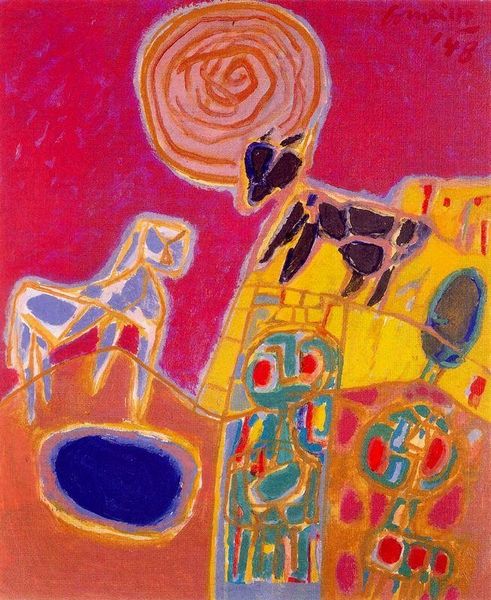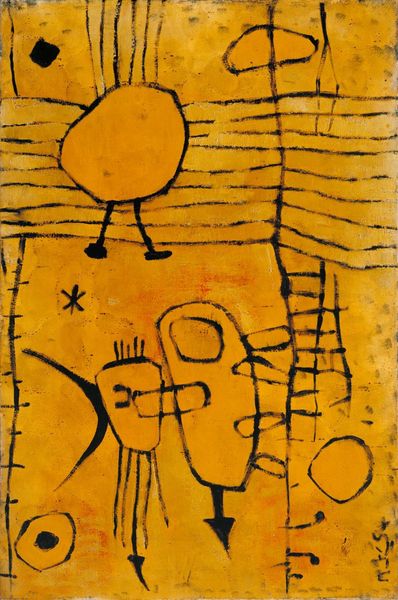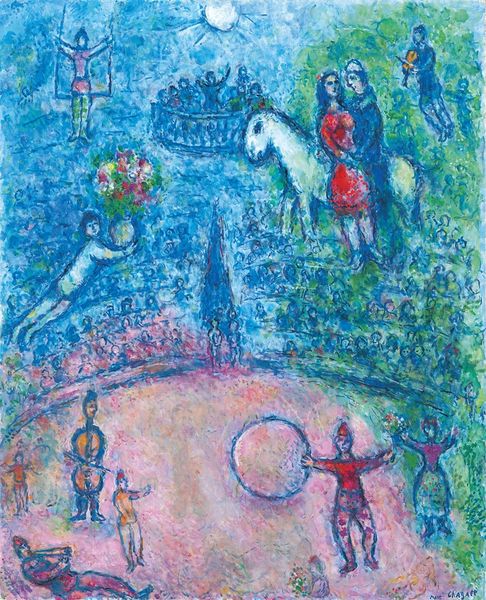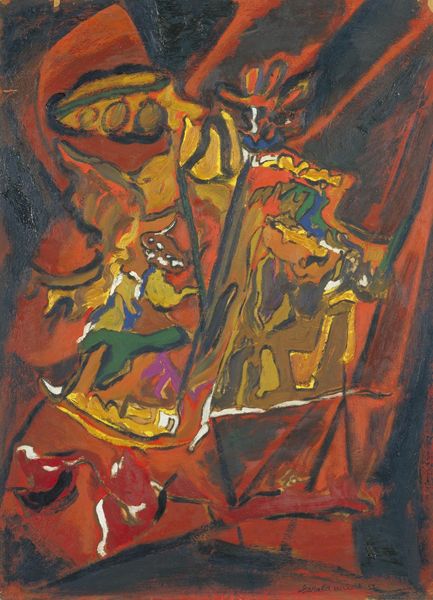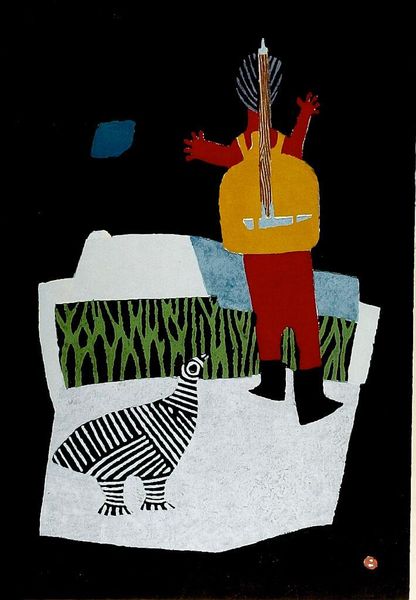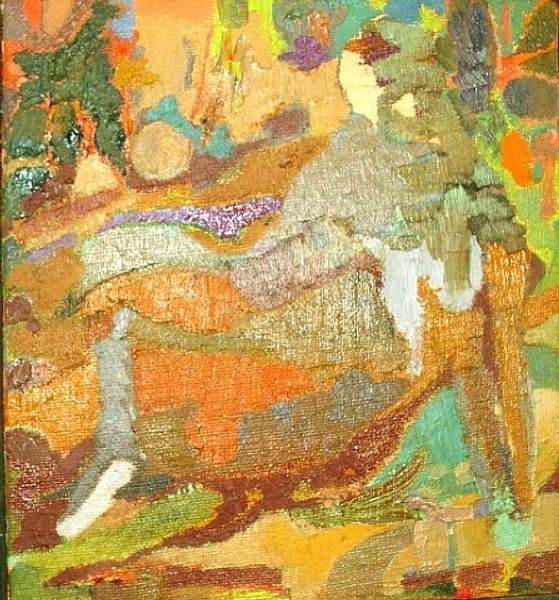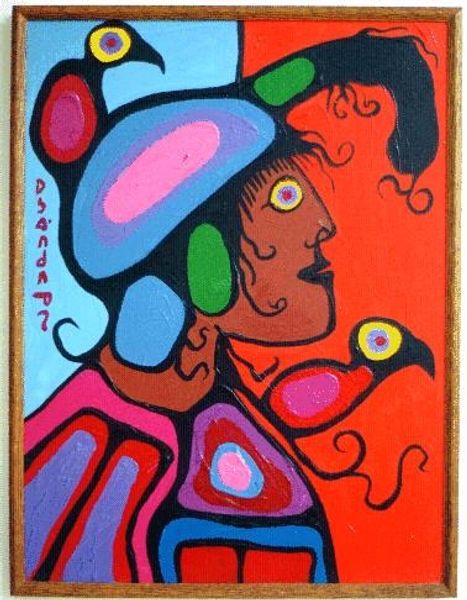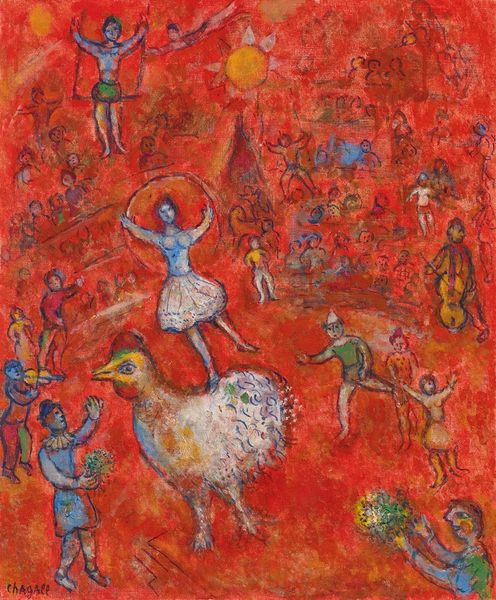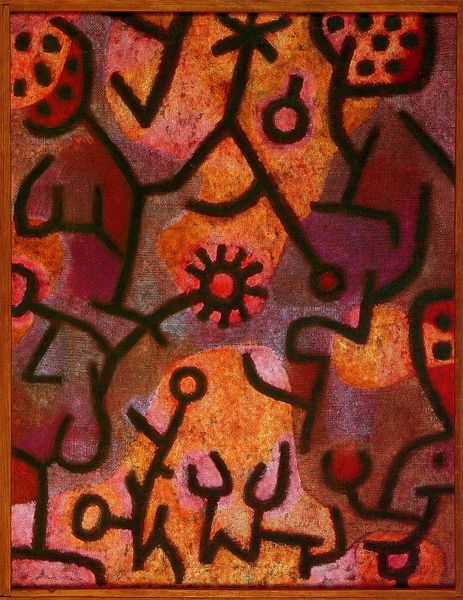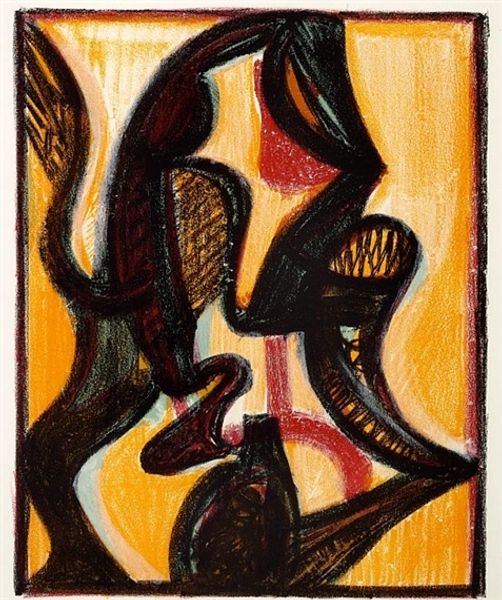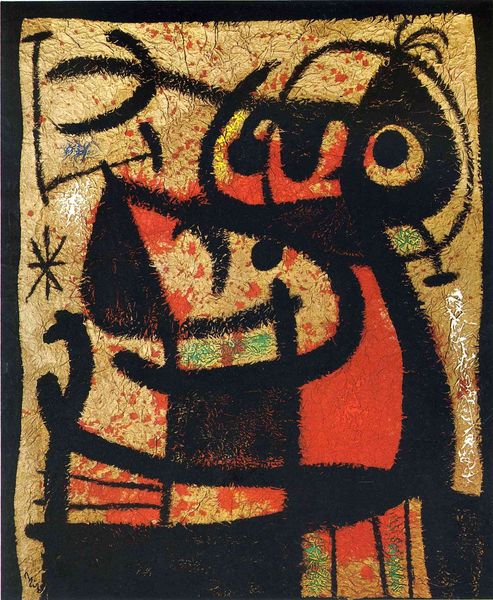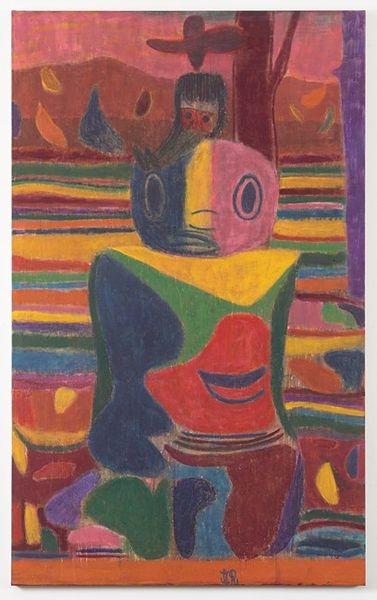
Copyright: Mordecai Ardon,Fair Use
Curator: Here we have Mordecai Ardon’s “For the Fallen - Right-hand panel: The Unborn,” completed in 1956. The expressive nature of this piece really hits me—the scratchy lines and simplified forms lend it a childlike quality. Editor: Yes, there's an unnerving sense of fragility here, and I'm particularly drawn to that broken crescent moon. Does it symbolize a broken promise, or perhaps the shattered innocence of potential lives lost? Curator: I find the texture compelling. The impasto effect, combined with what seems to be a deliberate naiveté in the application of paint, contributes to the overall mood of raw emotionality. It suggests Ardon worked the material with a sense of urgency or maybe even distress. Editor: The prominent placement of what appears to be a barren womb in the center of the figure is unsettling. Coupled with the moon's incompleteness, I wonder about the psychological state Ardon was attempting to portray, evoking collective memory. Curator: Thinking about it further, that sense of naive art does clash with the heavy symbolism you're talking about. This panel, one third of a larger work, probably benefits by understanding its placement. The use of material creates immediacy and conveys feeling for all those lives yet lived. It pulls no punches, forcing viewers to confront mortality and memory through something that could be dismissed as childlike but obviously isn't. Editor: Absolutely. Consider the iconography, this 'unborn' theme in response to mass devastation after the Holocaust; it carries the weight of unspeakable trauma. And then there's that eerie carriage like thing too; its wheeled supports convey movement, as if these symbolic children had just started an important, short, or tragically interrupted, journey. It’s almost like it suggests life reduced to a machine. Curator: It’s intriguing to consider how that juxtaposition – the childish renderings of a heavy historical concept - heightens the emotional resonance. There’s real tension created when the work pushes up against the medium itself. It allows Ardon's work to comment on something profound even as it maintains accessibility. Editor: Looking closer, I appreciate how Ardon wields visual metaphor to grapple with devastating themes of loss and unrealized futures. The seemingly simple images resonate profoundly, revealing enduring patterns in collective trauma, the power of remembrance, and a world robbed of potential, Curator: And for me, it’s the texture itself that communicates the work's true subject – all those things it hints at are because the painting looks like this! Editor: It really gets you thinking.
Comments
No comments
Be the first to comment and join the conversation on the ultimate creative platform.
